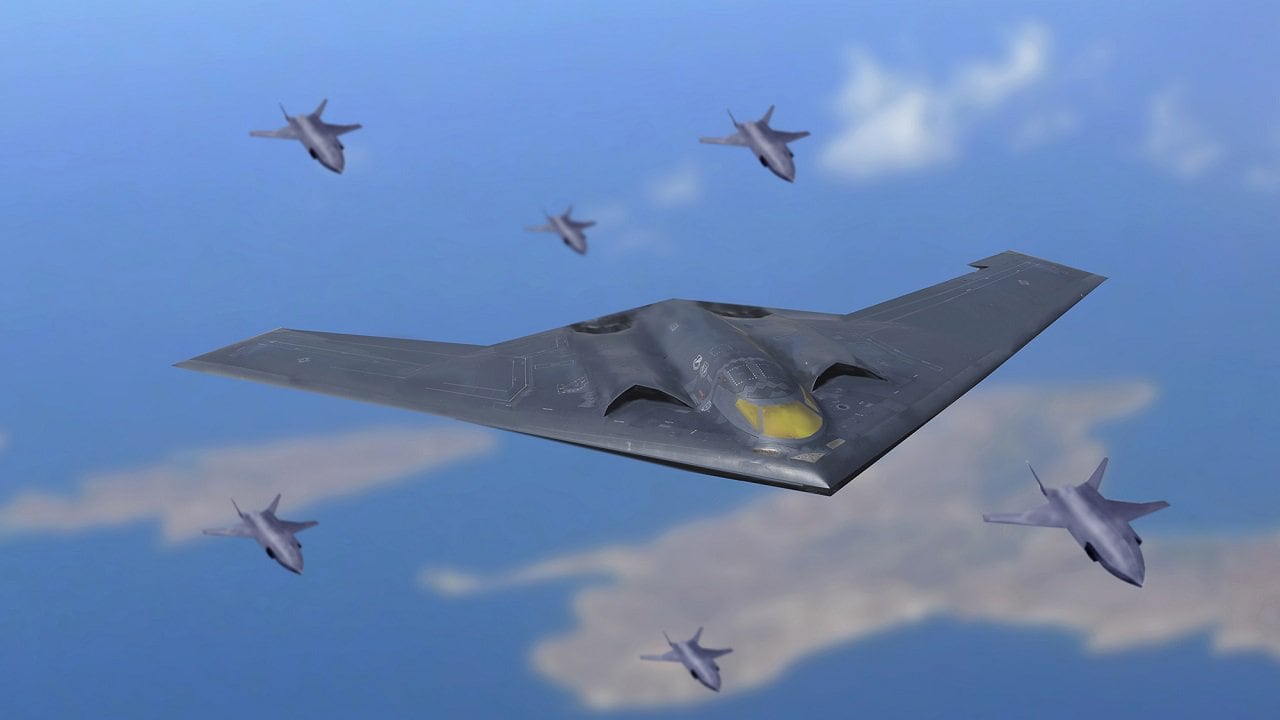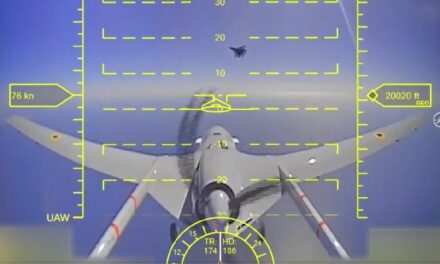We support our Publishers and Content Creators. You can view this story on their website by CLICKING HERE.
Key Points: The U.S. Navy’s F/A-XX sixth-generation fighter is positioned as a practical, cost-effective alternative to the Air Force’s Next Generation Air Dominance (NGAD) program, which has faced budget overruns and operational pauses.
-Designed to replace the F/A-18 E/F Super Hornet by the 2030s, the F/A-XX emphasizes affordability, avoiding the pitfalls of the F-35 program. While the Navy and Air Force are pursuing separate sixth-generation fighters, collaboration on shared propulsion systems and stealth innovations could reduce duplication and costs.
-Both programs are critical for maintaining air dominance as China and Russia advance their own sixth-generation projects.
Is the U.S. Navy’s F/A-XX a Good Idea?
We frequently discuss the U.S. Air Force’s Next Generation Air Dominance (NGAD) fighter here at National Security Journal. But the U.S. Navy has plans for a sixth-generation warplane, too. Let’s hope this duplication of effort is not wasteful and that the competition will create a healthy level of innovative design and effective engineering. Let’s take a look at the Navy’s entry into the sixth-generation fighter sweepstakes.
The NGAD Is On Operational Pause
The Navy is trying to be more cost-effective than the Air Force’s NGAD, which could cost upwards of $300 million a unit. The Air Force worried so much about prices and design issues that it placed the entire program on “pause” this fall to figure out a path forward by the end of the year.
The Navy Has a Better Handle on F/A-XX
Meanwhile, the Navy is forging ahead with a design that they believe is more “practical” and easier to achieve for less money so that it is on time and under budget. The new airplane is called the F/A-XX, which stands for “experimental,” and is an original concept aimed at replacing the F/A-18 E/F Super Hornet for the 2030s. The F/A-XX won’t be using Air Force technologies at this point, and it will particularly focus on an advanced “adaptive” engine.
Will This Improved Engine Work for F/A-XX
The idea is to create “’derivative-type engine solutions’ to avoid the Air Force’s acquisition delays and budget overruns,” according to InterestingEngineering.com. This will make the F/A-XX budget-friendly and hopefully will avoid the acquisition “valley of death” when a weapons system never makes it to serial production after spending significant time, money, and resources during the research development and design phase.
One aspect of F/A-XX is that the Navy is ahead of the Air Force in the procurement cycle. The maritime branch has already put the project out to bid, and Boeing, Lockheed Martin, and Northrop Grumman are believed to be in the running.
NGAD artist concept from Northrop Grumman.
Avoid the Pitfalls and Expenses of the F-35 Program
Since the design and specs will be independent of the Air Force, the military’s next-generation fighters will not have variants that cross all the service branches like the F-35. This should help both programs be cost-effective, even though there is a friendly competition between the Air Force and Navy that could prove expensive. Both branches should learn from each other about the best practices in design efficiencies and cost-cutting.
The F/A-XX is expected to have a different stealth airframe than the NGAD. Both airplanes could share an engine, although those details have yet to be sorted out. The Air Force is forging ahead with its Next-Generation Adaptive Propulsion system, while the Navy wants its “derivative-type engine solution.”
The F/A-XX should be ahead of the NGAD since the Navy has been working on the concept since 2012. The Air Force has been active on the NGAD for only a few years. These 6th generation airplanes are competing for resources. The Air Force has its B-21 Raider bomber and a new Intercontinental Ballistic Missile. The Navy has a newfangled submarine program and an advanced destroyer.

An artist illustration depicts a U.S. Air Force extended-range B-21 Raider escorted on a mission by armed unmanned next generation air dominance platforms. This fictional bomber features longer, wider wings, and a deeper fuselage that accommodates larger fuel tanks and dual weapons bays that enables the bomber to carry a much larger and varied payload. Mike Tsukamoto/staff; Greg Davis/USAF
In fact, the Navy is spending less on the F/A-XX. “Fiscal constraints have already imposed cuts, with the Navy’s fiscal 2025 budget reducing planned spending on the F/A-XX by 67 percent from fiscal 2025 to 2028, lowering the projected budget from $10.3 billion to $3.3 billion,” InterestingEngineering.com wrote.
I’m divided over the two services’ efforts to make a 6th generation airplane. The NGAD and F/A-XX sound good conceptually, but it seems like they will step on each other’s toes in practice. The best path forward is for the two branches to work together on a common propulsion system. This makes financial sense and decreases the risk of duplicating effort that would be expensive and even wasteful. That means the F/A-XX could place the bid out first with an emphasis on building a 6th generation engine and then share that with the Air Force, assuming the Navy propulsion system comes out on time and under budget. Of course, the NGAD could also be sent out to bid someday, and these efforts from the defense contractors could yield the new propulsion system on the Air Force side. They could also share the best practices on stealthiness for the air frame.
The new airplanes are exciting and will help the Air Force and Navy dominate the air going into the next decade. China and Russia have 6th generation airplanes in various stages of development, so it stands to reason that the United States should too. Let’s just hope that two next-generation designs don’t break the bank and enter the valley of death.
About the Author: Dr. Brent M. Eastwood
Brent M. Eastwood, PhD, is the author of Don’t Turn Your Back On the World: a Conservative Foreign Policy and Humans, Machines, and Data: Future Trends in Warfare, plus two other books. Brent was the founder and CEO of a tech firm that predicted world events using artificial intelligence. He served as a legislative fellow for U.S. Senator Tim Scott and advised the senator on defense and foreign policy issues. He has taught at American University, George Washington University, and George Mason University. Brent is a former U.S. Army Infantry officer. He can be followed on X @BMEastwood.

 Conservative
Conservative  Search
Search Trending
Trending Current News
Current News 





